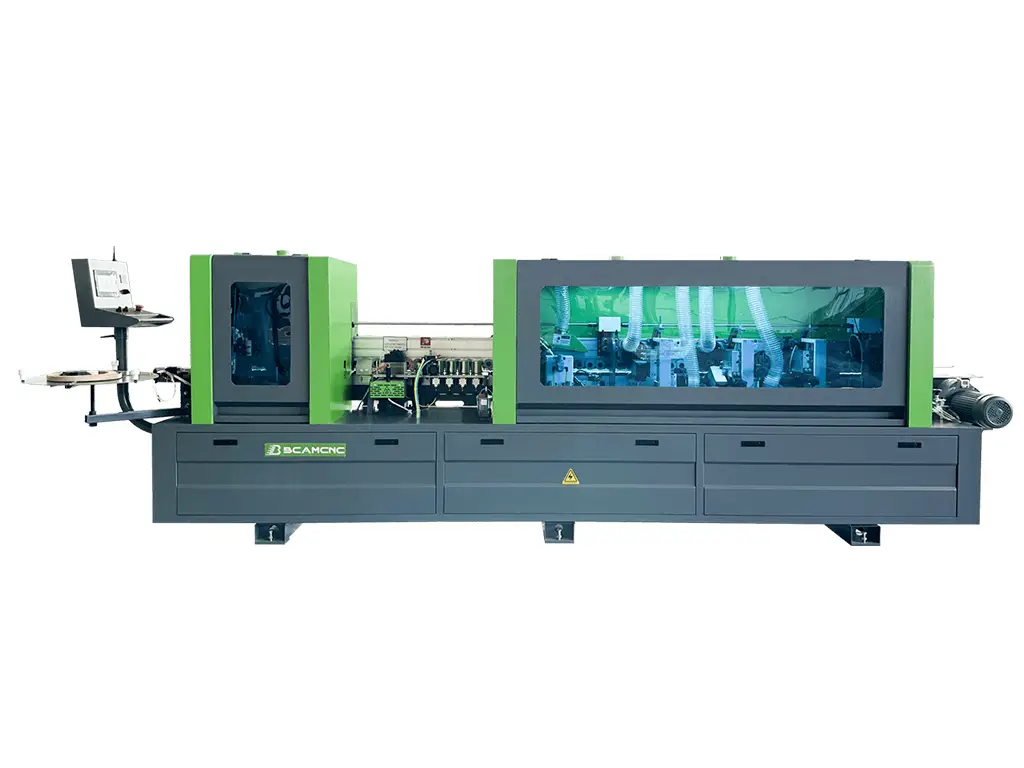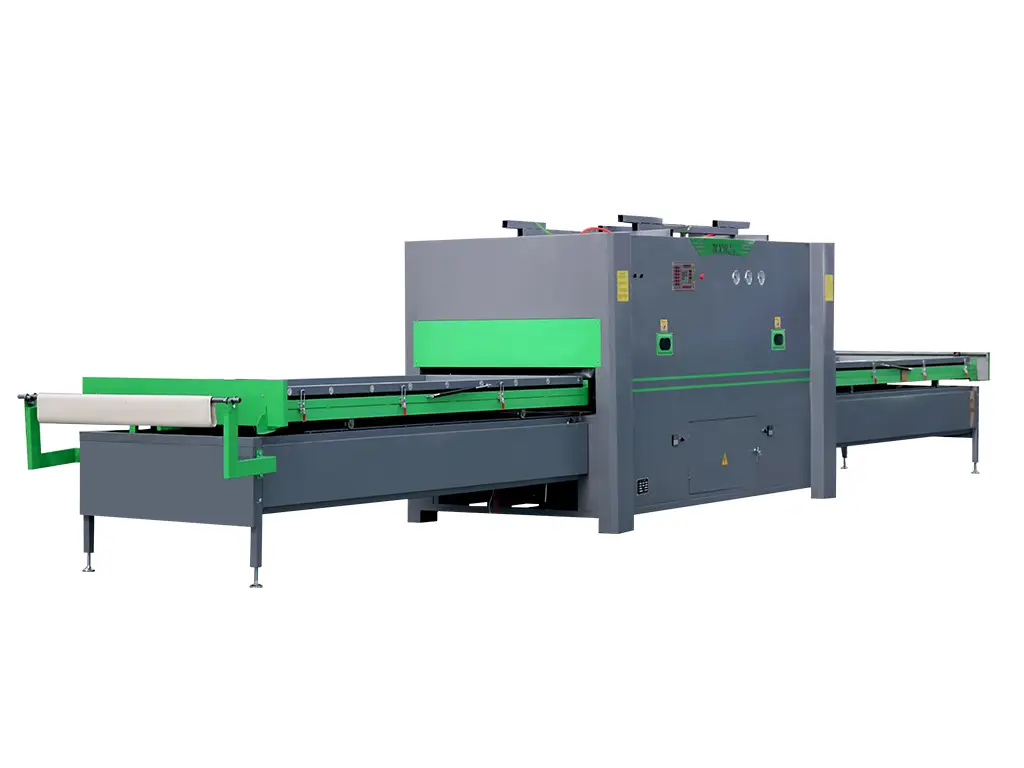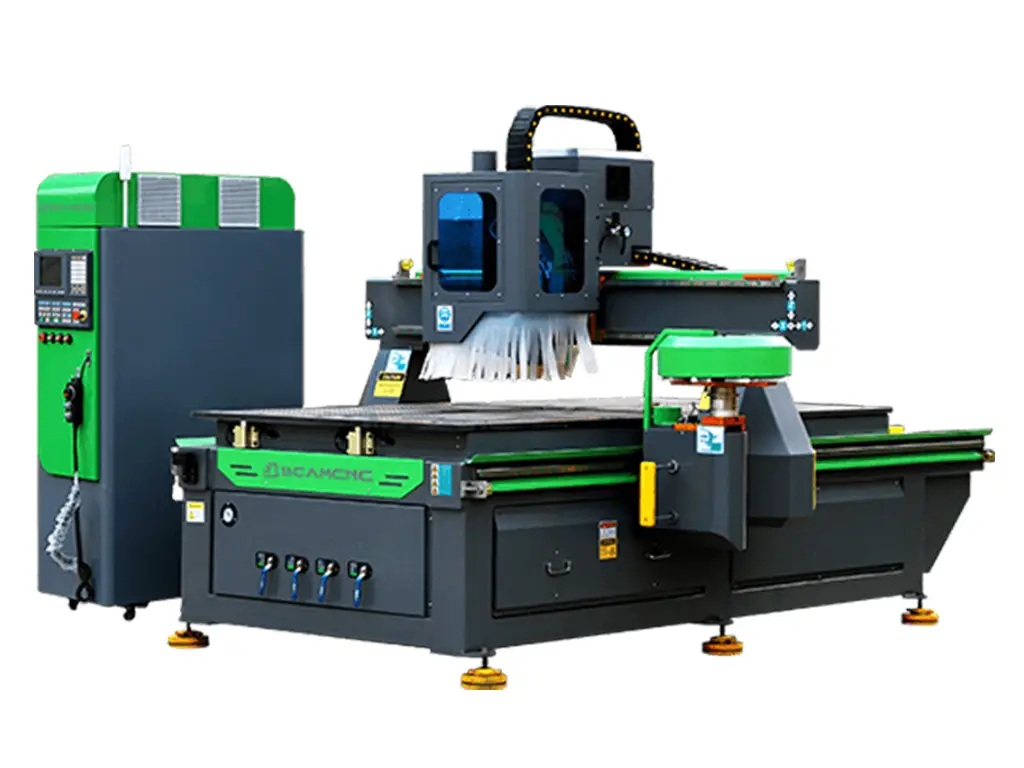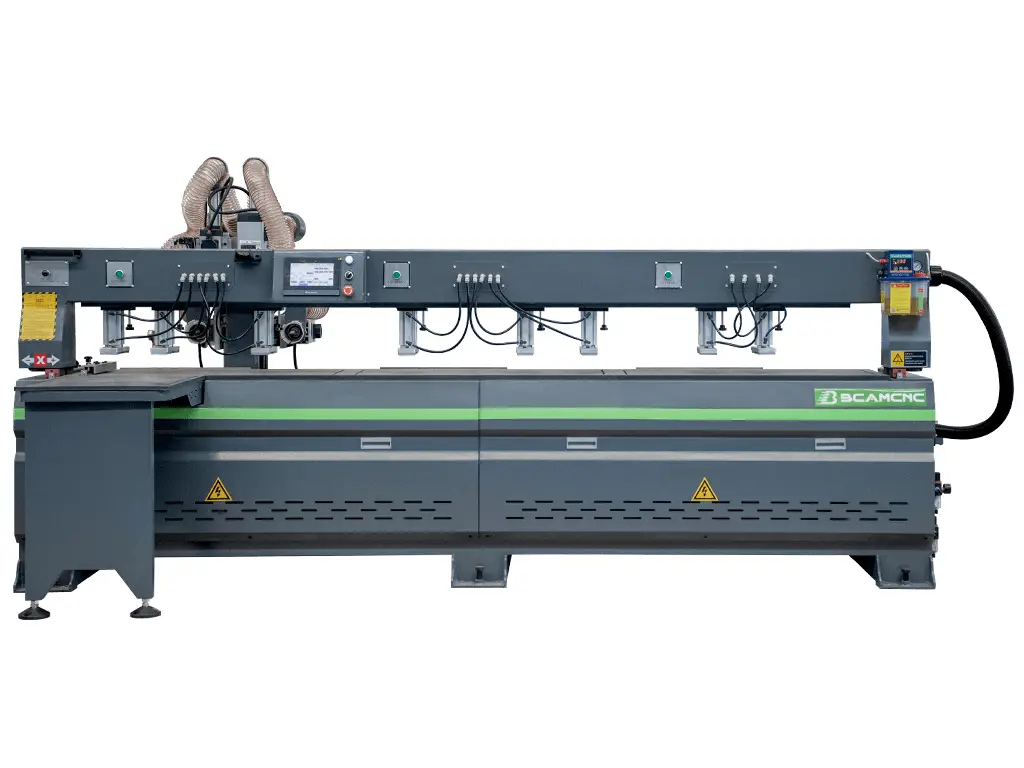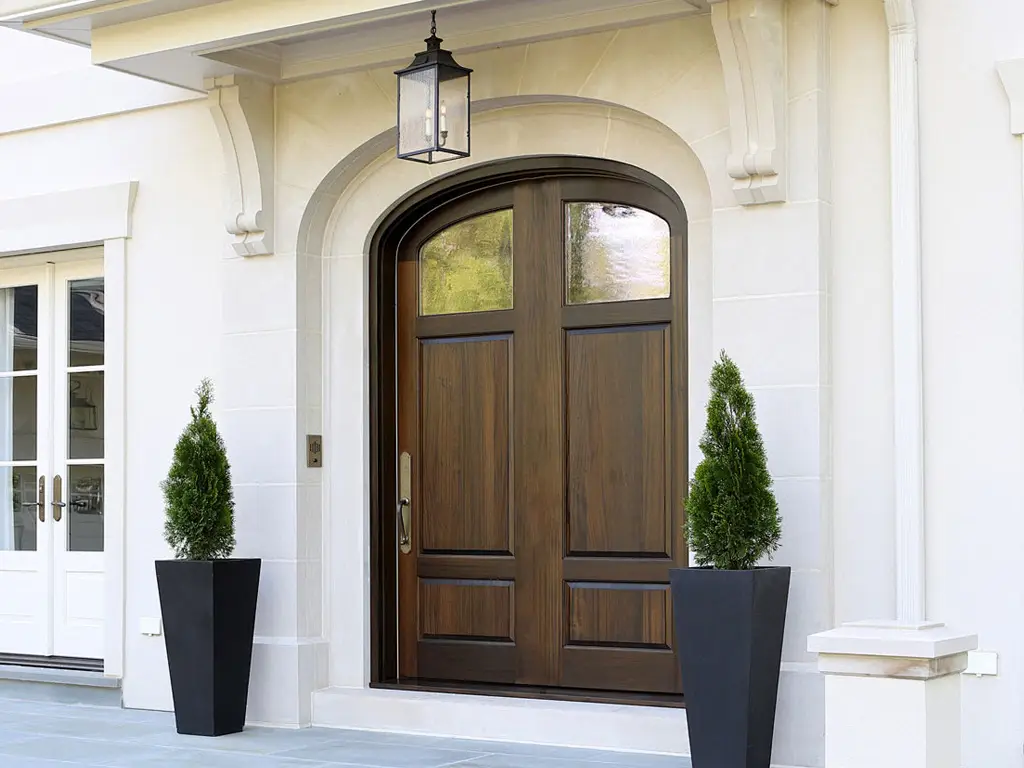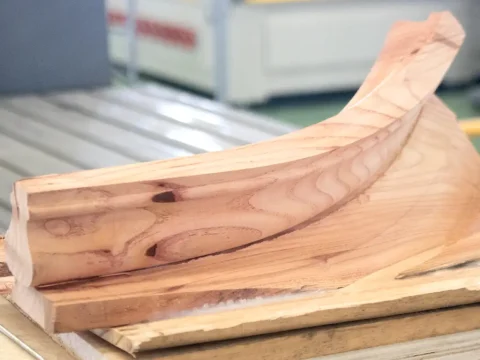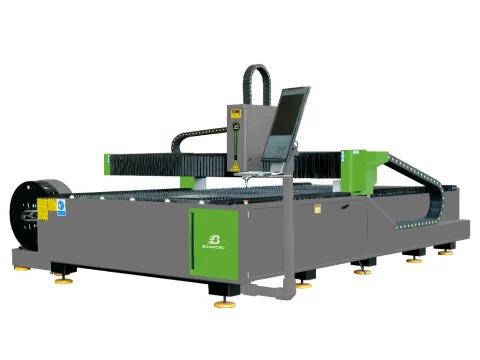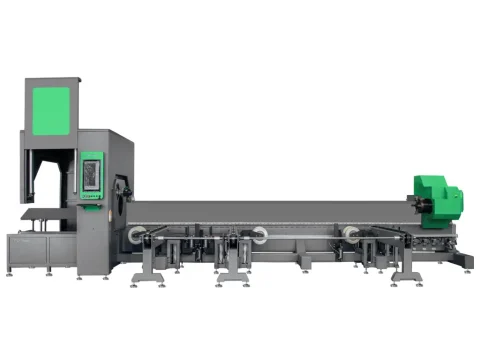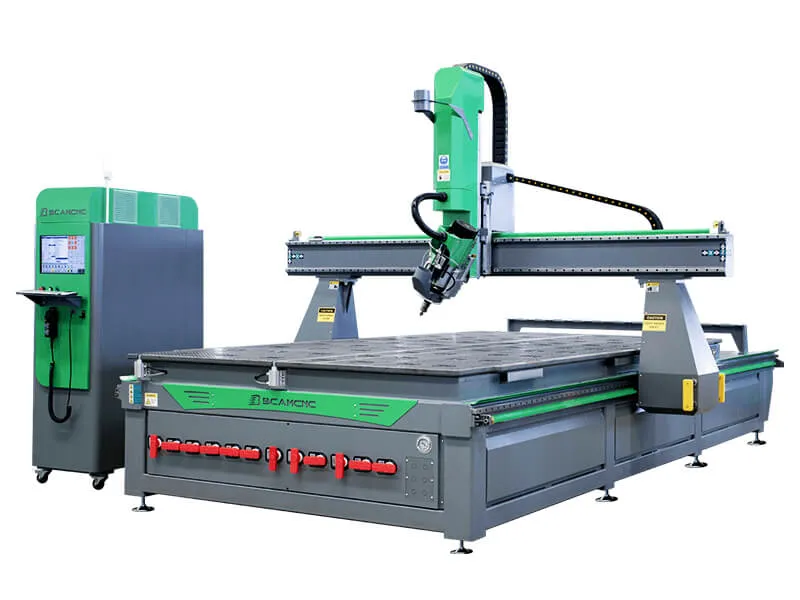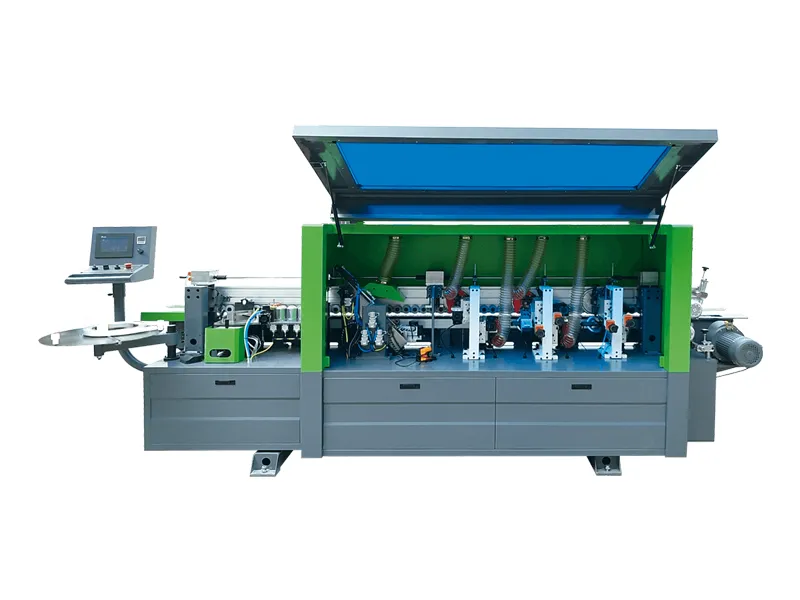Paint-Free Door Processing: Complete Workflow with CNC and Automation
Paint-free doors, also known as film-coated or laminated doors, have become increasingly popular in modern furniture and interior design. They combine aesthetic appeal with durability while eliminating the need for traditional painting or finishing, reducing environmental impact and production time. But how are these high-quality doors manufactured efficiently while maintaining consistent precision? The answer lies in a fully integrated door production line, incorporating advanced CNC machinery, automated feeding systems, and specialized equipment for every step of the process.
Why Choose a Paint-Free Door Production Line?
Producing doors manually can be time-consuming, inconsistent, and prone to defects such as misaligned panels, uneven coatings, or sanding errors. A paint-free door production line automates each stage of manufacturing, ensuring high precision, consistent quality, and reduced labor costs. By integrating specialized machines for cutting, carving, sanding, filming, gluing, pressing, and edge banding, manufacturers can produce large volumes of doors with uniform quality. Additionally, using a dedicated production line minimizes material waste and allows for customizable designs, giving businesses flexibility and competitive advantage.
How Are Door Panels Precisely Cut for Paint-Free Doors?
The first step in paint-free door processing is door cutting. Accurate cutting ensures that both face and bottom panels meet dimensional standards for assembly. The process typically involves:
-
CNC rough shape cutting machine: This electronic cutting saw efficiently performs the initial rough cut, shaping the door panels to the desired dimensions. Using CNC technology, the machine guarantees repeatable accuracy, reducing human error.
-
Sliding table saw: After rough cutting, the sliding table saw performs precise trimming to ensure smooth edges and correct panel size. This machine is essential for maintaining tolerances and preparing the panels for subsequent processing.
By automating cutting, manufacturers save time while ensuring that each panel is perfectly aligned for carving, sanding, and filming.
How Is Door Carving Executed for Decorative and Functional Designs?
Once the panels are cut, they proceed to the door carving stage. Carving machines add both functional and decorative elements to door surfaces:
-
CNC Router machine: This CNC router is capable of producing intricate designs, grooves, and patterns on the door panel, enhancing aesthetic appeal. It can handle different panel thicknesses and materials, ensuring consistency across production batches.
-
Why is precise carving important? Accurate carving improves assembly fit, supports the application of films, and increases the overall quality perception of the door product.
Automated carving also reduces the need for manual craftsmanship, which can be inconsistent and labor-intensive, ensuring each panel meets high standards.
How Is Door Sanding Completed for Smooth Surface Preparation?
After carving, door panels must be sanded to remove rough edges, splinters, or uneven surfaces:
-
Sanding machine: Specialized sanding machines, often customized for irregular shapes, provide uniform surface preparation.
-
How does automated sanding improve efficiency? Automated sanding machines achieve consistent smoothness across every panel, eliminating manual labor variability and preparing the surface for effective film lamination.
Proper sanding is crucial for ensuring that the laminating film adheres perfectly and that the finished door surface is visually flawless.
What Is the Role of Film Laminating in Paint-Free Doors?
Film lamination is the core of paint-free door production:
-
Film laminating machine: This machine applies a protective and decorative film to the door panel surface. The film provides color, texture, and durability without the need for liquid paint or drying processes.
-
Why laminate instead of paint? Lamination reduces environmental impact, eliminates drying time, and provides a surface that is resistant to scratches, moisture, and stains.
By combining high-precision sanding with advanced film laminating equipment, manufacturers ensure that doors have a perfect finish and long-lasting performance.
How Are Door Panels Glued and Pressed for Stability?
After lamination, the door panels undergo gluing and pressing to bond layers securely:
-
Single side gluing machine: This machine applies adhesive to one side of the panel accurately, ensuring uniform distribution.
-
Belt machine and microwave press: These systems compress the panels under controlled pressure and temperature to achieve optimal adhesion.
-
Down roller: Used to support and guide panels during pressing, ensuring consistent bonding without warping.
Automated pressing improves structural integrity while maintaining high production speed, crucial for large-scale manufacturing.
How Are Doors Cut to Final Dimensions Using 4-Sides Cutting?
Once pressed, door panels require final dimensioning:
-
Gantry feeding system and center roll table: Automated feeding ensures panels enter the 4-sides saw accurately.
-
4-sides saw: This machine cuts all four edges of the door, ensuring perfect squareness and dimensional accuracy.
-
Buffer storage: Temporary storage buffers help maintain workflow efficiency and prevent bottlenecks during large production runs.
Precision cutting at this stage guarantees that doors will fit frames and hardware correctly without additional manual trimming.
How Is Edge Banding Performed on Paint-Free Doors?
Edge banding seals the door edges, protecting the core material and improving aesthetic appeal:
-
Edge banding machine: Automatically applies edge materials with adhesive to door sides.
-
Rotary gantry and discharge roll table: These systems guide the panels through the banding process, ensuring smooth and uniform application.
-
Why is automated edge banding better than manual? Automated banding maintains consistent width, adhesion, and alignment, reducing defects and saving labor.
Multiple conveyor belts and buffer storage systems optimize production flow, allowing high-volume output with minimal downtime.
How Are Lock Holes and Hinges Processed?
The final step involves lock and hinge machining:
-
Lock hole and hinge machine: CNC systems drill precise lock and hinge locations according to pre-defined templates.
-
Gantry discharge and drive roll tables: These systems move the panels through the processing stations efficiently.
-
Why is precision critical? Accurate lock and hinge placement ensures proper door function, smooth installation, and high customer satisfaction.
Automated lock and hinge processing eliminates errors, prevents misalignment, and increases overall reliability.
How Does This Integrated Production Line Benefit Manufacturers?
Implementing a full paint-free door production line offers multiple advantages:
-
Consistency and Quality: CNC and automated systems ensure every door meets strict dimensional and aesthetic standards.
-
High Efficiency: Automated cutting, sanding, laminating, gluing, pressing, and edge banding reduce labor time and increase throughput.
-
Reduced Waste: Optimized material handling and precision machining minimize scrap.
-
Flexibility: The line can handle different door designs, panel sizes, and laminating materials.
-
Scalability: Suitable for small workshops and large factories alike, supporting both custom orders and mass production.
-
Customer Satisfaction: Accurate machining and flawless finishing improve door durability, appearance, and ease of installation.
By integrating these specialized machines, manufacturers can produce paint-free doors that meet modern market demands for efficiency, aesthetics, and environmental sustainability.
Why Should You Consider Paint-Free Door Production?
In today’s competitive market, traditional painting methods are time-consuming, costly, and environmentally challenging. Paint-free doors provide a sustainable alternative with shorter production cycles, consistent quality, and superior finish durability. By adopting a comprehensive production line, businesses can increase profitability, expand product offerings, and meet higher customer expectations.
With BCAMCNC CNC cutting, carving, sanding, laminating, gluing, and edge banding machines, manufacturers can implement a streamlined workflow, reduce manual labor, and achieve precision levels that are impossible with manual methods. The combination of automation, precision engineering, and multi-step integration ensures that every door is produced to exact specifications with minimal errors.
Conclusion: Transforming Door Manufacturing with Integrated CNC Production
The paint-free door production line represents a significant advancement in modern door manufacturing. By utilizing CNC and automated machinery for every stage—from cutting and carving to laminating, gluing, pressing, 4-sides cutting, edge banding, and lock/hinge processing—manufacturers can achieve higher productivity, consistent quality, and sustainable operations.
Businesses adopting such integrated systems not only save time and labor but also gain the flexibility to produce diverse door styles with precise tolerances. For customers seeking inspiration and practical guidance, understanding the workflow and equipment involved in paint-free door production offers valuable insight into efficient, modern manufacturing practices.
